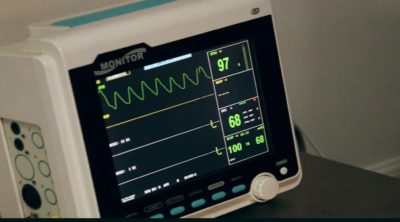
Anesthesia is the use of medication to numb a particular area of the body during a surgery or any medical procedure. Anesthesia blocks the pain or stress reactions to a particular surgery. This article tries to explain the types of anesthesia available.
Anesthesia is a condition of having the sensation of an individual or patient blocked temporarily, to allow that individual to undergo surgery and other medical procedures without any pain, which otherwise they would experience. Not that every surgery or medical procedure would require the patient to undergo this condition, yet most of them do to avoid distress and pain, during and post the surgery.
The anesthesia given to a person differs from condition to condition and intensity of the same differs according to the health of the person to whom it is given. A patient has to undergo various medical and physical tests before the medical practitioner actually decides which type of anesthesia is best suited for him and the quantity of anesthetic drug to be administered.
The reason an anesthesiologist is very careful before injecting the drug is because, anesthesia acts on the central nervous system of the patient. Hence, an incorrect dose would disturb the entire working of the central nervous system, which is considered to be the CPU (central processing unit) of the body. In most cases, where the patients are advised a general anesthesia, the anesthetic drug is usually injected in the spinal cord.
The drug works via the spinal cord which runs down from the brain and branches out to the other parts of our body, sending signals of being numb. In simple words, now the brain cannot send signals to any part of the body and since the organ does not receive any signal it doesn’t respond to the same. Thus, the patient’s sensation is dead or his body is numbed. The anesthesiologist will decide the anesthesia best suited for you, after examining your physical fitness and the type of surgery.
Types of Anesthesia
Local Anesthesia
Local anesthesia, as the name suggests, is administered for a minor surgery on a specific or localized area of the body. A shot is injected around the area to be operated to reduce pain and distress during the surgery. Sometimes, anesthesia can also be given in the form of an ointment or spray. A local anesthesia will keep you awake throughout the surgery, but will numb the tissue around the surgery area. The effect of the local anesthesia is short-lived, and persists only or a few hours. This type of anesthesia is best suited for tests, procedures, minor surgeries and dental procedures where a lot of pain is not expected. Therefore, a local anesthesia will dull the pain.
Regional Anesthesia
Regional anesthesia is given in and around the major nerves of the body, to numb a larger part of the body yet, not the entire body. Here the numbing agent helps the patient to relax or sleep during the surgery. It is given over a prolonged period of time. Here, the anesthetic drug is injected near the cluster of nerves to block the pain during and after the surgical procedure. There are two major types of regional anesthesia, which include:
- Spinal Anesthesia: Spinal anesthesia, aka sub-arachnoid block (SAB), is a form of regional anesthesia injected into the spine of the patient. The patient is numb below the neck. The main aim of the drug is to block the transmission of the nerve signals. Once the signals from the nervous system are blocked, it eliminates any kind of pain. Usually, a patient remains awake during the medical procedure, however a sedative is given to the patient to relax and stay calm during the surgery. This type of anesthesia is commonly used for procedures on the belly, hips and legs.
- Epidural Anesthesia: Epidural anesthesia is a form of regional anesthesia and works on the same line as the spinal anesthesia. The two techniques are usually confused with each other; however there are a few minor differences. Epidural anesthesia is injected in the epidural space and is less painful than spinal anesthesia. Epidural is most suitable for procedures on chest, abdomen, pelvis and legs.
General Anesthesia
In general anesthesia the aim of the anesthesiologist is to keep the patient completely unconscious during the entire surgery. The drug is usually injected into the patient’s body, or a gas is passed through the breathing apparatus, which acts on your brain as well as the entire body. The patient is completely unaware of the memory of the surgery as, general anesthesia affects the brain and the entire body. The anesthetic effect remains on the patient throughout the medical procedure and all his important body functions like blood pressure, breathing and temperature of the body are closely monitored, in case of any fluctuations.
Once the surgery is over, the anesthesiologist will reverse the anesthetic effect and help the patient return to consciousness. Now, there are a few complications that may be encountered by some patients in case the anesthesia is wrongly administered, or in case of incorrect dosage. Most complications are temporary, while others can persist for a long time; however, subside over a period of time. Listed below are a few of them:
- Pain and tenderness around the injection site.
- Severe lower backache in case of spinal anesthesia.
- Decrease in blood pressure
- Nerve damage
- Due to an overdose of anesthesia, the patients respiratory and circulatory system could become distressed or even fail in some cases.
- Funny taste or numbness of mouth.
Such complications are rare; however call the anesthesiologist if such problems persist. In all other cases, once the effect of anesthesia will start to reduce, the patient will suffer from dull pain, which will be controlled by medication prescribed by the doctor.
Disclaimer: This HealthHearty article is for informative purposes only and does not, in any way, intend to replace the advice of a medical expert.


